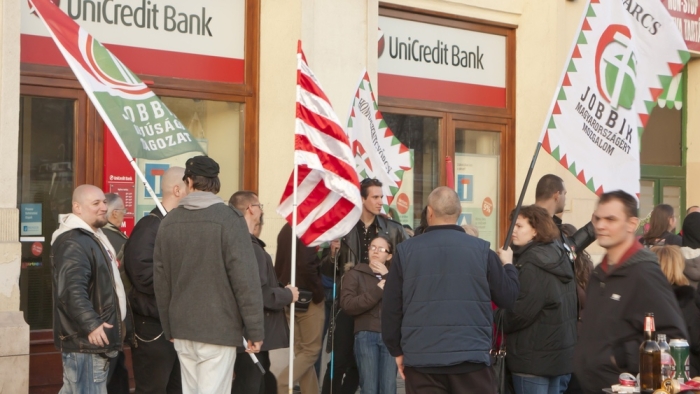The country encountered a particularly hurtful recession as it was following a period of rapid economic growth, also known as the Celtic Tiger, which started in 1995 and ended with the start of the global financial crisis in 2007. During this period the Irish economy grew at an average annual rate of 11.3%, which was reflected in the house prices as well.
The Irish economy is now among the fastest growing economies in Europe, with unemployment rates falling below the EU average, but it still faces a mix of housing supply, affordability, and viability issues, rising rents and construction costs.
Housing is a key component of economic issues in many countries around the world, which is especially true for Ireland. The first inflationary phase in the housing market started in 1995 at the beginning of the Celtic Tiger era and it did not stop until it grew into a property bubble. The bubble famously burst in 2007, putting an end to the drastic growth of the housing prices in Ireland, which was considered one of the highest relative price increases before the financial crisis. The housing market posed a serious problem for the country since the burst of the housing bubble, and since 2013 the market is undergoing an inflationary phase similar to the one preceding the global financial crisis, but the reasons behind it are quite different.
Drivers of housing demand
The annual estimate of housing demand in Ireland is 33,000 units per annum between 2016 and 2040. Similarly to many other countries, the key driver of this housing demand is the population growth, which was about 1.2% per annum in 2021. The birth rate is on the rise since 2012 and seems to be growing gradually as there is capacity for population growth. Unlike other European countries, the Irish population did not grow in the late 19th and 20thcenturies and has in fact fallen by 25% due to the Potato Famine in the mid-1800s, causing the country to being still underpopulated in the 21st century. The growing housing demand caused by the population growth is pushed even higher by the rising migration into Ireland, and the number of young Irish adults coming back to their homeland after seeking work abroad during the financial crisis.
The second huge driver to demand is the income and job growth. Employment and wages are both increasing in Ireland, which drives up the demand for housing. The new jobs are mostly created in the urban areas, as job growth in Ireland is concentrated in the services sector, which benefits mainly from urbanisation. Although the job growth is concentrated in urban areas, the Irish population – unlike other developed countries – remains relatively rural as the urbanisation rate of 63% is well below the OECD level of 79%. As a big part of the population is moving to the urban areas to be closer to their workplace, the need for housing in the cities grows at a higher rate than in other European countries.
Drivers and impacts of supply shortage
It is clear that the population and job growth are causing demand to rise at a rapid pace, but many argue how supply can keep up with the ever-growing levels of demand. Since demand is mainly driven by population growth and wages, it has recovered much faster than supply, which has a much smaller elasticity than demand. The recession following the financial crisis caused many constructors and developers to struggle or collapse for several years, therefore the supply response to growing demand was muted, which put a huge pressure on house prices. In recent years supply has been rising steadily again as the construction sector responds to the growing demand on the market, but it has still not reached the favourable pre-crisis levels of 75,000; the current level of just above 20,000 new units per annum falls quite short from the much needed 33,000. In fact, the average annual number of new residential units has not reached 30,000 since 2007, and with the set-back caused by Covid-19 it is not likely to do so any time soon.
The crisis not only had its strong effects on construction, but it also had major impacts on the population’s access to credit. As we have learned from the global financial crisis, if the access to credit is not regulated, the excessive property purchases using mortgage can drive house price inflation to a bubble level. Just like many other countries following the global financial crisis, the Central Bank of Ireland has also introduced its new, quite strict lending regulations. Although these regulations created a safer environment for lending and borrowing, it has also constrained the level of supply that would be needed to meet demand. Prospective borrowers now not only need to comply with the greatly reduced levels of loan-to-value, but they are also not permitted to exceed the 3.5 loan-to-income value, meaning that their borrowing is restricted to a maximum of 3.5 times the household’s gross annual income.
This restriction should prevent high levels of inflation in the property market, however, the demand for dwelling is not reduced but simply displaced, mostly into the rental market. As the number of households that are able to meet mortgage requirements is greatly reduced, the rate of home ownership is decreasing, and profits are channelled into the rental market. Therefore, rental prices are now higher than ever, growing faster than house prices. As a result of the growing number of rents relative to owner occupied homes, 30% of the households in Ireland are now in the rental sector, which means that rent levels have also been increasing over the last couple of years, starting off from €700 a month and reaching €1,387 in Dublin, and €1,007 outside of Dublin in 2020 Q4.
As opposed to rent prices, the gross average salary in Ireland currently stands at about €3,356 per month, which is arguably not enough to cover spendings after paying rent. In Ireland the commonly used threshold is 35% of the household’s monthly income, rents exceeding this percentage are considered unaffordable. According to the Residential Tenancy Board’s findings, 50% of the households who rent from the private market are facing unaffordable rents, which shows that there is not only a housing crisis, but more importantly a rental crisis.
Since the 2013 low point, the house price index containing both rental and sales prices shows a 67% increase in house prices, while wages have not been rising at the same level: the mean annual earnings showed only a 1.5% rise per annum, while the price of newly built houses has risen around 10% per annum, including the high costs of construction as well. This means that the affordability gap is growing, which puts a huge pressure to sales and rent prices and causing a lot of overpricing on the market. As prices are close to reaching an all-time high point again, the market is showing signs of faltering, meaning that high-priced homes in Dublin 4 and Dublin 6 – the most expensive areas in the country – are struggling to sell, forcing property owners to cut their prices.
Regulatory attempts
Since 2018 the situation is officially considered as a housing crisis, causing the Irish government to intervene. In July 2021, the president signed a stamp duty act to prevent homebuyers by mitigating bulk purchases of investors. The Act takes form of a 10% stamp duty charge on the cumulative purchase of 10 or more residential houses in a year, which is aimed to disincentivise investors from buying houses and leaving more houses on sale for households. In September 2021, the government also decided to allocate a record €4bn annually to build 300,000 homes by the end of the decade. The ‘Housing for All’ project will start with 33,000 new units a year and rising to 40,000 by 2030. However, it is unclear whether the government will be able to tackle the rising prices in the sales and rents as the initiative is quite new,









